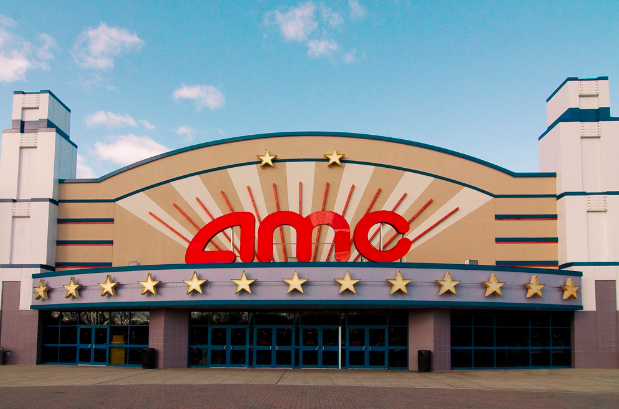The troubled future of movie theaters and streaming
To quote the iconic Nicole Kidman AMC ad, “We come to this place for magic. We come to AMC theaters to laugh, to cry, to care. Because we need that, all of us.”
For many people in the year 2023, this statement about movie theaters still reigns true, but thanks to streaming services — the number of people that value the movie theater experience is declining. The past three years have not been kind to theatergoers, or to theater owners. Attendance reached record-breaking lows during the pandemic, and the typical big-time box office busters are no longer performing the way they used to.
In addition, several iconic venues including Brooklyn’s Regal UA Court Street, and Los Angeles’ industry-beloved ArcLight Hollywood, were forced to close down altogether. And even with the 2022 return of blockbuster movies, the very moviegoers that these films were created for are now hesitant to make the trip to their local theater. Prime examples are the long-anticipated releases of West Side Story and “Lightyear”, which failed to connect with theatrical audiences, only to become hits once they wound up on streaming services. For myself and my fellow film fans, “will movie theaters survive?” has been an ongoing question, but I believe the answer is right in front of us.
When the question “Do you want to stream a movie or see it in a theater” is posed to me, I always choose the latter. I’ve collected my movie ticket stubs since I was seven years old and I’ve seen five Marvel films on their premiere day. I’m a very active AMC Stubs Premiere member and I have my go-to movie theater bag hanging on my door 24 hours a day. To me, movies are meant to be experienced with those you love, and these very stories can widen your worldview or simply just provide a 2-hour and 34-minute-long sense of escapism.
However, with the rise of streaming services, the very movie theaters that I and so many people cherish are slowly disappearing. To survive, theaters must adapt and co-exist with streamers like Netflix, Apple TV+, and HBO.
According to a Statista Research Department study from June 2020, “only 14% of adults said that they strongly preferred seeing a movie for the first time in a theater, and 36% said that they would much rather stream the film at home than visit a cinema.”
Between 2018 and 2020, preferences for watching a new release in a theater instead of via a streaming service in the United States changed significantly, signaling a shift in consumer behavior and presenting a huge risk for movie theaters in the US. “I’ll wait to watch it at home” is a commonly heard phrase these days and when it comes to smaller indies, which are being boxed out by big-budget franchise films, these low-budget films that might have once traveled the local arthouse circuit after film festivals, are instead finding homes on mega-streamers such as Amazon, Netflix, and Apple TV+. And it seems like this action is being rewarded especially when Apple’s “CODA” made history last year, as the first streaming movie to win an Oscar for Best Picture.
Despite the influx of streaming, the recent releases of delayed box-office hits proved that movie lovers still want the communal experience. For example, the billion-dollar turnout and insane crowd reactions for “Spider-Man: No Way Home” (2021); the $2.1 billion earnings for “Avatar 2”; and the $334 million in global earnings for DreamWorks’ “Puss in Boots.” Then there is the really surprising $104.1 million turnout for “Everything Everywhere All At Once” – A24’s highest-grossing film which showcased that people are still making an effort to see the smaller, diverse, less typical indie films in theaters as well.
“I think movies in theaters are going to become more expensive, event-ized,” actor and director Ben Affleck told Entertainment Weekly earlier this year. He also brought up the argument of sequels vs original stories. “Movies are mostly going to be for younger people, and there’ll be 40 movies a year theatrically, probably, all IP, sequel, animated.”
In 2013, Steven Spielberg and George Lucas shared a similar sentiment while speaking on a panel at the USC School of Cinematic Arts.
“You’re going to end up with fewer theaters, but then receive bigger theaters with a lot of nice things,” said Lucas. “Going to the movies will cost 50, 100 or 150 bucks, like what Broadway costs today, or a football game. It’ll be an expensive thing … (the movies) will sit in the theaters for a year, like a Broadway show does. That will be called the ‘movie’ business.”
Many film industry veterans and audiences point out that, in order to keep the lights on, theater owners need to upgrade their venues to compete with the superb sound and screen systems that many Americans have in their very own basements.
“Cinemas are getting smaller and smaller, and sometimes you just say, ‘Okay, I’d much rather stay at home’,” Jane Rosenthal, the Oscar-nominated co-founder of Tribeca Film Festival said. “We’ve got to fix up the theaters, so that people say, ‘I want to be here, and I want an experience that takes me beyond just watching something on a screen.”
But of course, the surface-level upgrades are not enough to save the future of movie theaters. Film/TV director and Reservation Dogs co-creator Sterlin Harjo said to EW that he could “imagine theaters embracing long-form even more, if I could watch Game of Thrones every week at a theater with my friends, that’d be exciting.” Netflix’s global film head Scott Stuber believes in a similar idea. “I think theaters will evolve and host social events, they’ll make deals with sporting leagues, so you can watch the games on weekends. Kids will go there to watch tournaments. And there’ll be a place for big-event television” said Stuber.
Such changes might sound insane to those who grew up during the 1970s when movie theaters were almost considered holy, hosting the premieres of Star Wars and Close Encounters. But the theater industry has survived countless challenges over the last several decades, so there’s no reason why theaters can’t evolve to face the challenges of the streaming era as well.











